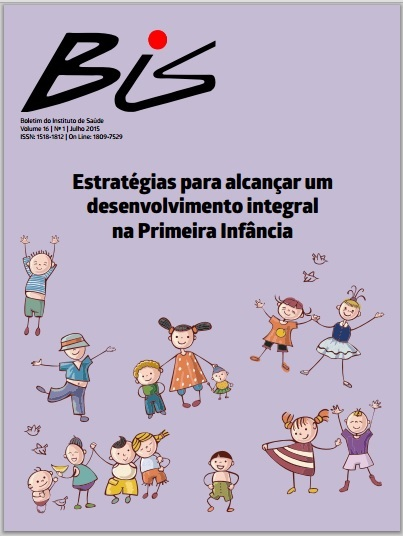Abstract
The Prematurity, due to its persistent frequency and to the high risk of neonatal morbidity and mortality associated, is still one of the biggest challenges of Perinatology and of the population programs aimed at reducing child mortality worldwide. In 2010, it was estimated that 11.1% of live births were premature in the world, that means about 15 million children. It was also very signifi cant the verifi cation that this proportion was increasing over time in many countries and it was the leading cause of neonatal mortality and the second cause of infant mortality. A preterm newborn at birth is already at high risk to develop complications related to its level of immaturity, with long-term effects, especially on its neurodevelopment. Despite the improvement observed in perinatal care over time, control of prematurity still seems distant, even in developed countries. For this reason, it is necessary to identify the most frequent determinants of prematurity in each population/country so that control programs of these can become more effi cient. In this text, the main risk factors associated with prematurity will be discussed, from those related to spontaneous preterm birth to the so-called induced or initiated premature births, with emphasis on the contribution of cesarean delivery.
References
2. Blencowe H, Cousens S, Oestergaard M Z, Chou D, Moller A, Narwal R et al. National, regional, and worldwide estimates of preterm birth rates in the year 2010 with time trends since 1990 for selected countries: a systematic analysis and implications. The Lancet. 2012; 379:2162-2172.
3. Goldenberg RL, Culhane JF, Iams JD, Romero R. Epidemiology and causes of preterm birth. The Lancet. 2008; 371:75-84.
4. Gyamfi -Bannerman C, Fuchs KM, Young OM, Hoffman MK. Nonspontaneous late preterm birth: etiology and outcomes. Am J Obstet Gynaecol. 2011; 205: 456, 451-56.
5. Howson CP, Kinney MV, Lawn JE, editores. Born to soon: the global action report on preterm birth. Geneva: World Health Organization, 2012. [acesso em 7 jan 2014]. Disponível em: http://www.who.int/pmnch/media/ news/2012/201204_borntosoon-report.pdf.>.
6. Kramer MS, Papageorghiou A, Culhane J, Bhutta Z, Goldenberg RL, Gravett M et al. Challenges in defi ning and classifying the preterm birth syndrome. Am J Obstet Gynecol. 2012; 206:108-112.
7. Lawn JE, Gravett MG, Nunes TM, Rubens CE, Stanton C. The GAPPS Review Group. Global report on preterm birth and stillbirth (1 of 7): defi nitions, description of the burden and opportunities to improve data. BMC Pregnant Childbirth. 2010;10(suppl 1)S1.
8. Liu L, Johnson H, Cousens S, Perin J, Scott S, Lawn J et al. Global, regional and national causes of child mortality: an updated systematic analysis for 2010 with time trends since 2000. The Lancet. 2012; 379:2151-2161.
9. Ministério da Saúde. Sistema Nacional Informatizado de Nascidos Vivos (SINASC). Brasília (DF): 2011. [acesso em 27 nov 2013]. Disponível em:< http://tabnet.datasus.gov. br/cgi/tabcgi.exe?sinasc/cnv/nvuf.def>.
10. Muglia LJ, Katz M. The enigma of spontaneous preterm birth. NEJM. 2010; 362:529-535.
11. Passini R Jr, Cecatti JG, Lajos GJ, Tedesco RP, Nomura ML, Dias TZ et al. Brazilian Multicenter Study on Preterm Birth (EMIP): prevalence and factors associated with spontaneous preterm birth. Plos One. 2015; 9:e109069.
12. Silveira MF, Santos IS, Barros AJD, Matijasevich A, Barros FC, Victora CG. Aumento da prematuridade no Brasil: revisão de estudos de base populacional. Rev Saúde Pública. 2008; 42:957-964.
13. United Nations. The Millennium Development Goals: report 2010. New York: United Nations; 2010.
14. Villar J, Papageorghiou AT, Knight HE, Gravett MG, Iams J, Waller SA et al. The preterm birth syndrome: a prototype phenotypic classifi cation. Am J Obstet Gynecol. 2012; 206:119-123.
15. World Health Organization. WHO recommended defi nitions, terminology and format for statistical tables related to the perinatal period and use of a new certifi cate for cause of perinatal deaths. Modifi cations recommended by FIGO as amended October 14, 1976. Acta Obstet Gynecol Scand. 1977; 56:247-253.

This work is licensed under a Creative Commons Attribution 4.0 International License.
Copyright (c) 2022 Cléa Rodrigues Leone
